 |
Please note : There are lots of large pictures on this page
these may take some time to download if using a dial up connection.
Some images are interactive and will change if you place the mouse pointer over them.

B001 & B004 The first two releases of the Duple Dominant II Coach
|
A Brief History
The Duple Dominant Coach
The first Dominant Coaches were produced by Duple in 1972, the body was given a major update in 1975 when the Michelotti of Turin restyled mark II was introduced.
Duple & Plaxton dominated the UK market during the 1970s & early 1980s, the Dominant & Plaxton Supreme were both popular bodywork choices with small and large operators alike.
The National Bus Company bought large numbers of both types for various fleets within the group, many of the vehicles were fitted with bus grant doors for use on longer district bus services, the vehicles were also widely used on the National Express network of routes and many received the white corporative livery.
In the London area a three year programme started in 1977 to upgrade the vehicles used on the Greenline network, 150 leased Supreme & Dominant bodied AEC Reliances were chosen for this task.
The Dominant body was fitted to products from various popular chassis manufacturers including Bedford, AEC, Leyland, Ford and later Volvo and DAF. It continued to evolve during it's long period of production with annual minor design tweaks. High floor Goldliner versions with more luggage storage below the floor and a mark III version with it's forward-angled trapezoid windows were also produced.
The final Dominant bodies were built in 1982 and the design were succeeded by the much shorter lived Caribbean & Laser range.
Duple saw a marked decline in sales during the early 1980s as more operators switched to other European manufacturers for their vehicle needs. The business was sold to the Hestair group in 1983 and what remained of the coach building activities eventually passed to long time rival Plaxton in 1989.
|
|
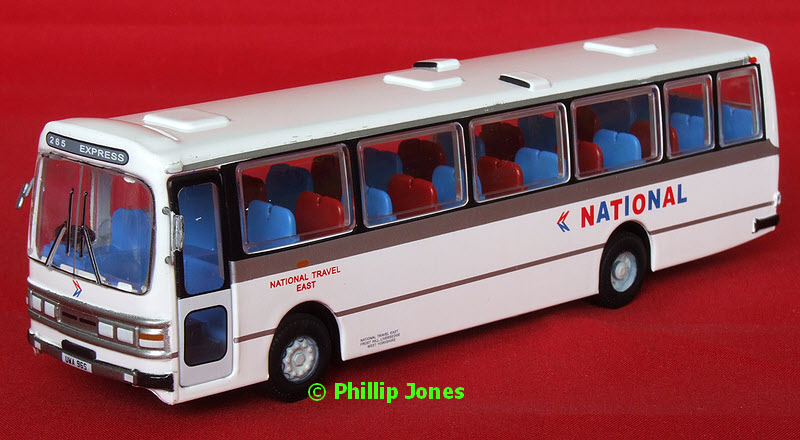
B001 - National Travel East UWA 96S
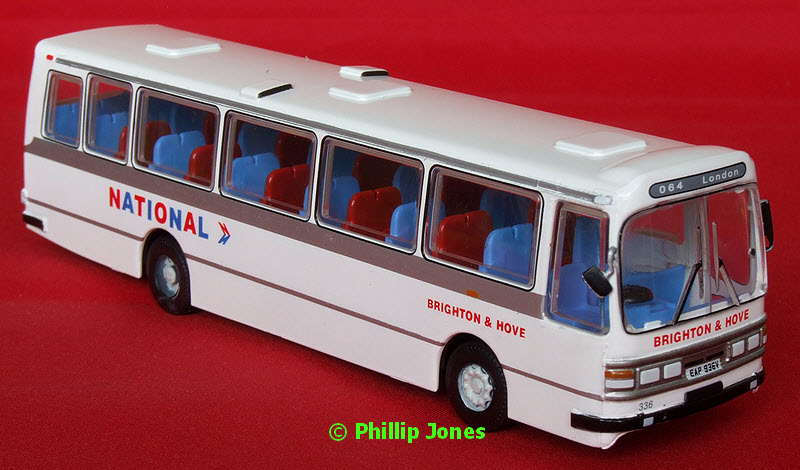
B004 - Brighton & Hove EAP 936V
|
| The Model
The B-T Models' version is based on a mark II body from 1975, the first pair of releases are almost identical and come in the mainly white livery of National Express. Both have plug type coach doors and front roof mounted destination displays.
Other variations of the model with different door types and without the roof destination are planned and thus there should be plenty of potential for a wide array of future releases.
These are the first 1/76 scale plastic coaches from a major manufacturer of UK models, with most die-cast models now costing £30 plus B-T Models has obviously seen a gap in the market for a lower priced product. With a RRP of £16.99 these will certainly fulfill that aim, the questions many will be asking is does the reduced price also mean an equal drop in quality and more importantly can B-T Models really produce a decent model for virtually half the price of a current die-cast.
The models themselves have a one piece plastic body shell, on the National pair this is unpainted white plastic, the finish is what would be best described as semi-gloss and certainly comes well short of the high glossy finishes found on the current die-cast models.
Now although this might sound like a bad thing in reality I can't say it really adversely affects the models appearance. In fact I think in some ways this looks more realistic for this scale.
|
|
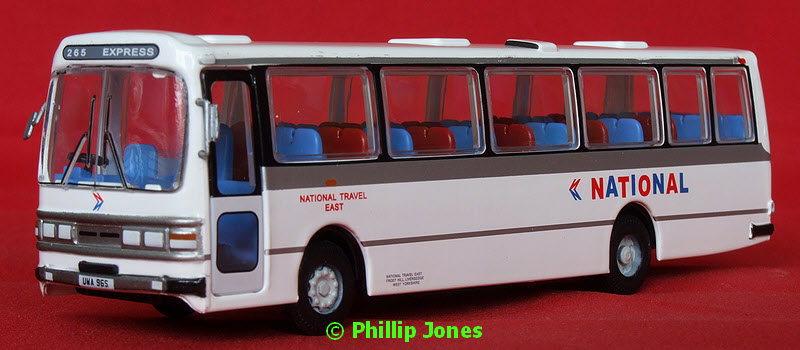
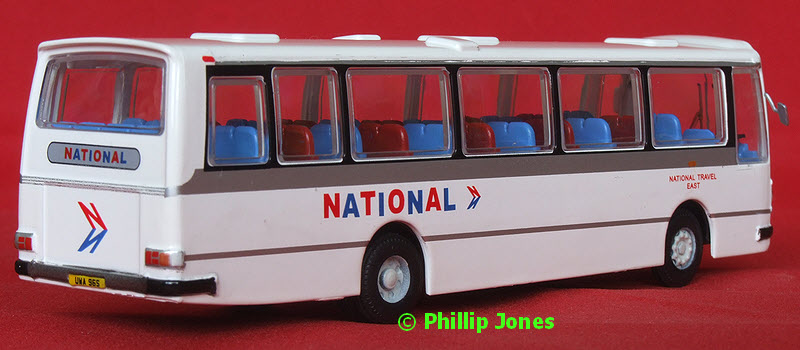
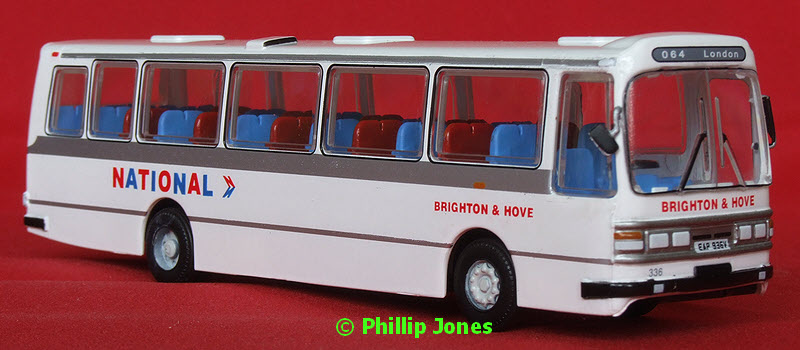
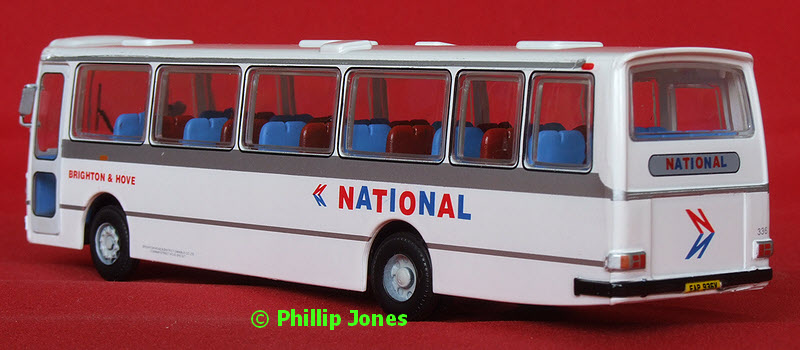
|
|
The body sides are completely smooth and have no panel detailing, the only raised features present are the thin beading around the windows and along the edge of the roof.
Orange indicator lights are tampo printed in two positions on each side, the ones on the roof edge are printed over specific moulded detailing.
The chrome strips on the sides are also printed and although these are straight and cleanly applied the silver paint finish does look a little flat, this is particularly true in regards to the waistband which on the real vehicles has a distinctive ribbed polished chrome design.
The side window pillars are part of the body shell rather than being tampo painted onto the glazing, these are nice and thin and look perfectly acceptable for this type of vehicle.
|
|


|
|
On the rear the lights, bumper and the silver bead above the boot are the only raised features. The boot door itself is slightly recessed into the bodywork and looks a little odd as a result. The rear light clusters are of the horizontal type and it remains to be seen whether any future models will feature the alternative vertical type.
Finally it has to be said that the rear off-side corner pillar is much wider than the nearside one, this is quite noticeable when viewed from the sides. I believe the reason for this difference is that on the real coach there would have been an emergency exit door in the final off-side bay. The model actually has the smaller window associated with the said door but there is no other detailing applied to reflect this feature and to my eyes this makes the pillar look to wide.
|
|
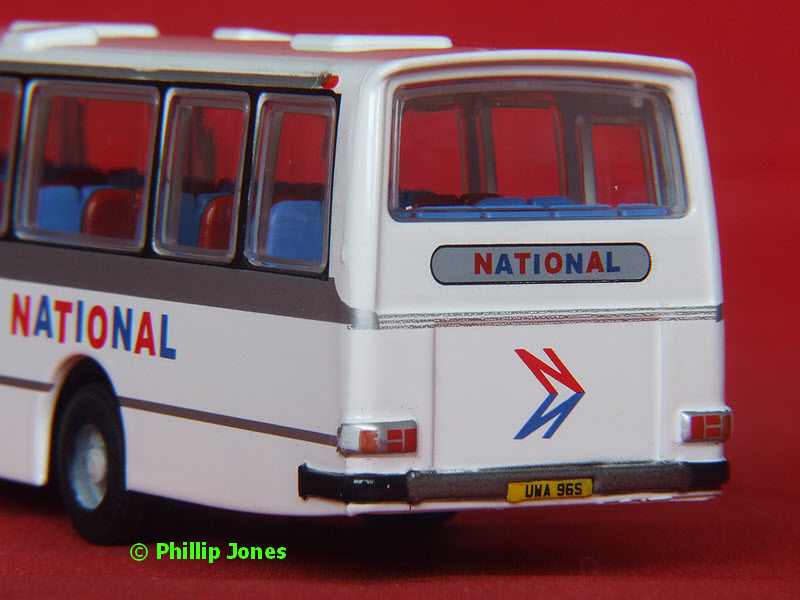
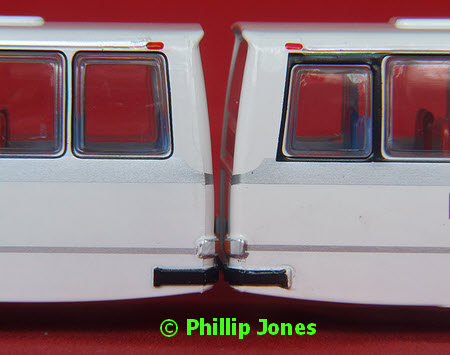
The lack of any detailing to represent the rear off-side emergency
exit door makes the corner pillar look oversized.
|
|
Moving on to the front, the grille and bumper are the only raised features. The light clusters are incorporated into the silver painted grille and finished with white or orange paint to represent the headlights, side lights & direction indicators.
The bumpers are painted with satin black or silver paint, the front ones have two lights housed within them and these are picked out in either white or silver paint. The small grille area between the headlights is reproduced with tampo printing and looks convincing enough.
The windscreen is a separate component which is fitted from the outside. The screen is held in place by a pair of tabs at the top which clip over the interior edge of the body, at the bottom two small internal lugs push into holes in the corners of the screen surround. The screen includes moulded wipers that are picked out very neatly with black paint. A tampo printed silver dividing strip is present down the centre while the rubber gasket mounting is represented by delicate black lining all around the edge.
The front pillars either side of the windscreen are rather chunky and the screen itself isn't a perfect fit. Both the sample models have a thin gap visible beside the door and neither screen sit totally flush with the body at the base.
|
|
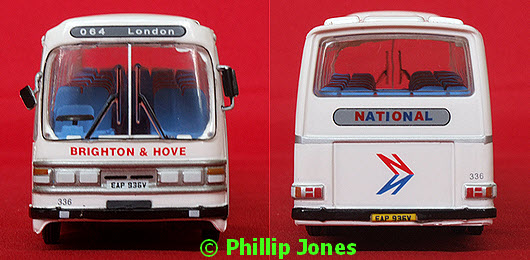
The model is slightly wider than it should be and when scaled up
gives a width of 8 foot 9 inches instead of 8 foot 2.5 inches
The difference in width can clearly be seen when
the model is compared to the EFE Plaxton Paramount model
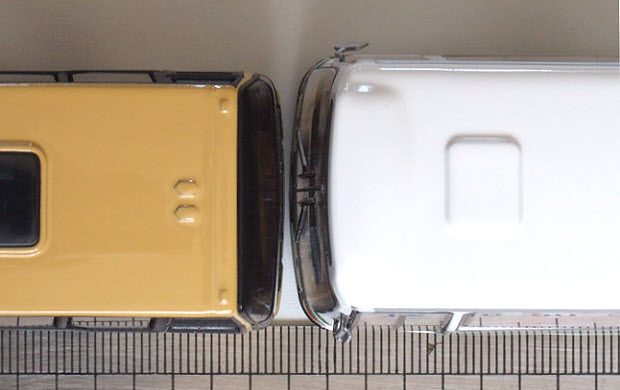
|
|
The door is part of the near side glazing unit and all the detailing is tampo printed directly of on to it, once again the thin black rubber glazing gaskets have been reproduced around the clear glazed areas.
The flush fitting side & rear glazing is as good as any you'd find on a die-cast and gives very clear undistorted views of the interior.
The model has fairly good mirrors in terms of scale, the near side one is a sturdy design with twin fixings, however the off-side one is held in place by a very fragile single support arm which seems to be very prone to damage. Quite a few of the models I've seen have had bent or broken mirrors and this problem isn't helped by the rather poorly designed clear plastic tray in which the model is packaged, the recess provided for the mirror simply isn't deep or strong enough to protect it from being crushed.
|
|
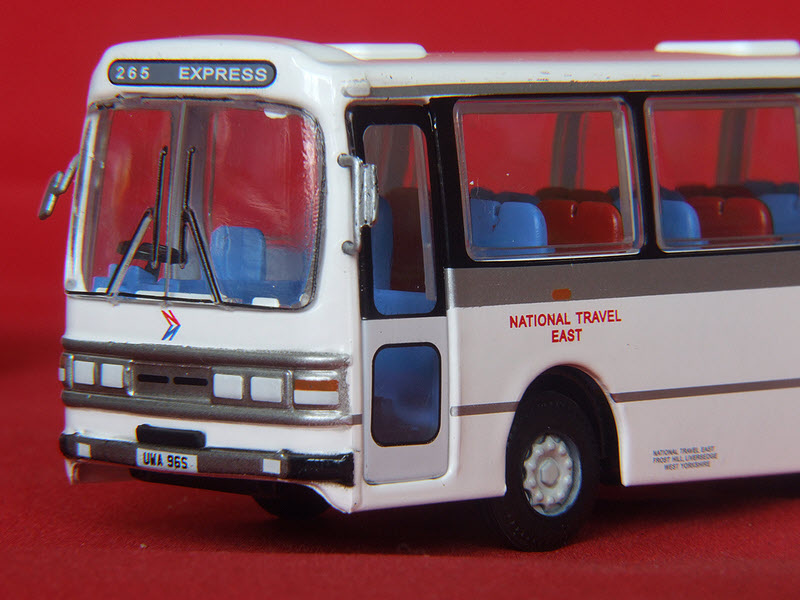
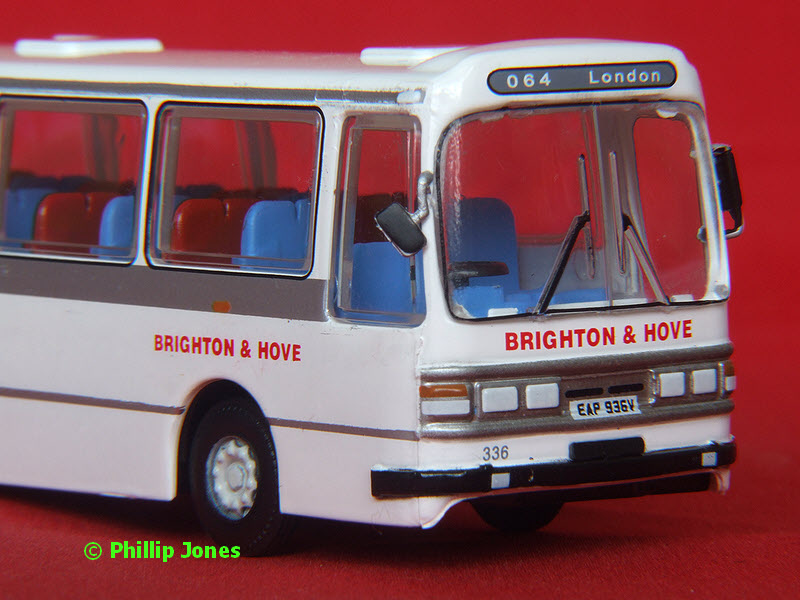
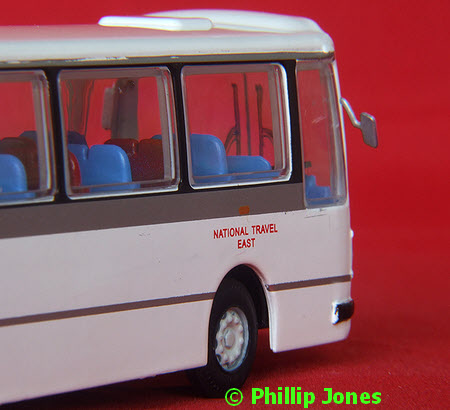
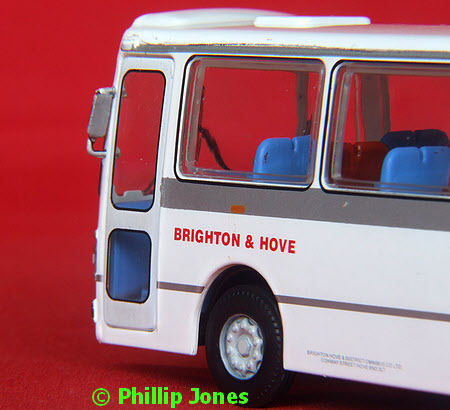
|
|
The decals are all tampo printed and overall this has been fairly well executed with the fine black beading around the side windows on the Brighton & Hove model being particularly impressive.
The red company names and small legal lettering are all sharp. The only slight problem on the two samples reviewed has been with the horizontal alignment of blue & red letters in the "National" name on the sides and rear.
The destination displays have a dark grey background with white lettering and are outlined in black, again there is no moulded detail for these so various alternative layouts shouldn't be problem on future releases.
|
|
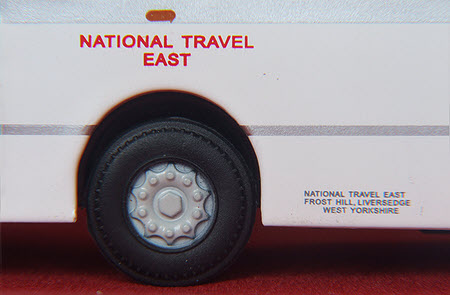
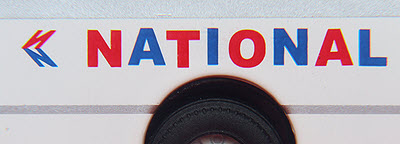
|
|
The roof has three raised vents along the centre and two smaller air intakes moulded onto it. The vents aren't glazed so I presume if these are required on future releases paint will have to be used to represent any glazing.
|
|

|
|
Moving on to the underside we find a fairly weighty die-cast baseplate, this includes detailing for a centrally positioned engine and a drive train to the rear wheels. An off-side fuel tank and some chassis members on the front two thirds are the only other features. The only wording on the baseplate is Made in China.
The wheels are made of black plastic and are a single component which incorporates the tyre and hub, the hubs are spray painted in the required colour and this process has been achieved without any over spray onto the tyres. If your planning to repaint the model the wheels can easily be pull off the metal spindles if required.
|
|

|
|
There are two small cross head screws in the baseplate, undoing these allows the model to be fully dismantled with relative ease. The baseplate has small central tabs at the front & rear which locate into recesses in the plastic body, pushing a thin screwdriver blade or finger nail between it a the body shell is all that is required to release it.
The seats unit lifts out to reveal the three individual glazing components which are held in place by tabs on the ceiling. The windscreen retaining tabs can then in theory be accessed to release it, however Phillip reports that on the model he dismantled to photograph the glue used to fix off-side mirror had also wielded the bottom screen lug to the body pillar!
|
|

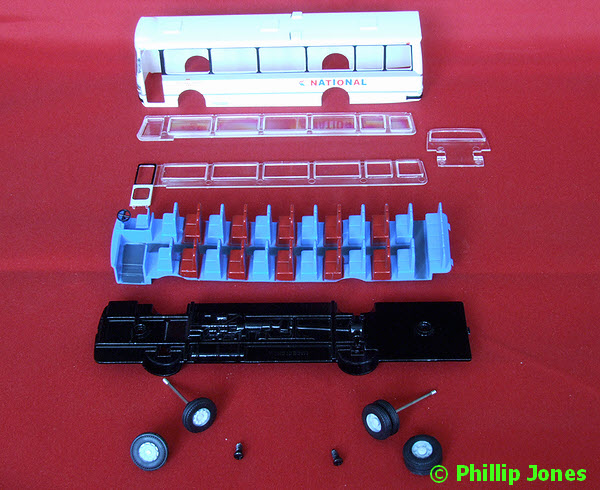
|
|
The interior itself consists of a single piece plastic moulding, this contains all the passenger seats, driver's cab and a steering wheel. The detailing is fairly basic and although the seats are alternatively finished in red or blue on these models they don't look very comfy with their less than convincing very upright backs. The central gangway and entrance steps have been picked out with grey paint which is a nice touch.
Interestingly there are four tabs on the ceiling behind cab area which suggest these my be an option to fit some sort internal partition on future versions.
|
|

Those seats don't look very comfortable!
|
|
Overall for £17 this model isn't that bad, granted it's no match if compared to say a CMNL offering but then it is less than half the price. The model manages to captures the shape of the real vehicle fairly well, the rear end is probably the weakest area and doesn't quite look right to me with it's slightly recessed boot lid. There's also a noticeable mismatch in colour of the painted door, it has a slight greyish tint, & the unpainted white body.
|
|
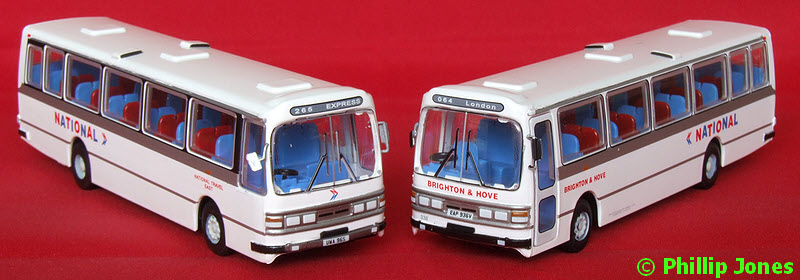
B001 & B004 Note the different treatment around the side windows and on the bumpers.
|
|
My only other criticisms of the model are that the wheels sit too low in the arches resulting in a large gap above the tyres and something seems to have gone slightly awry with the width of the model which scales up to around 8 foot 9 inches, it should be 8 foot 2.5 inches.
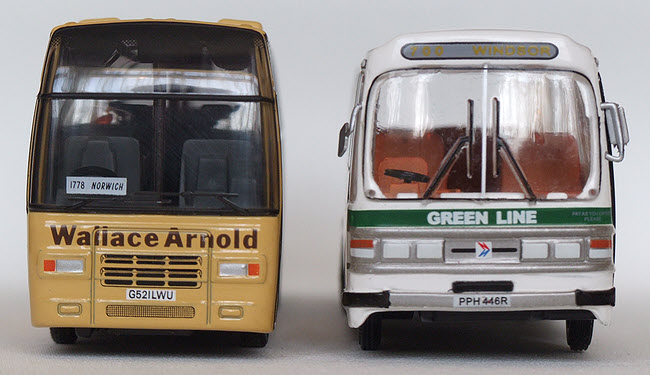
The EFE Plaxton Paramount 3500 coach & B-T Duple Dominant side by side
Would I buy one of these? Well I've got a Greenline one on pre-order and to be honest they've turned out much better than I had expected. They don't of course offer the high level of detail we've come to expect from the current range of die-cast models but for the price they are still perfectly acceptable and should prove popular if the current quality level can be maintained.
The model's construction and ease with which it can be dismantled should make it a good base for those wishing to do a chop &/or repaint. I'm sure those with the necessary skill and patience will be able to tweak the basic model to produce some stunning results.
|
|

|
|
Pros:
- Relatively Inexpensive
- Captures the essence of the vehicle
- Good glazing
- Easily dismantled for painting/modification
- Good tampo printing
Cons:
- Front & off-side rear corner pillars look oversized
- Windscreen fit not perfect
- Wheels sit too low in arches
- Very basic interior detailing
- Easily damaged off-side mirror
- Model is too wide
- Some may not like the unpainted finish
Marks:
Construction: 7/10
Livery Application : 8/10
Decal Application: 8/10
Interior Detailing 5/10
Likeness to Subject: 8/10
Overall: 7/10
|
|
| Model Review Index |



























